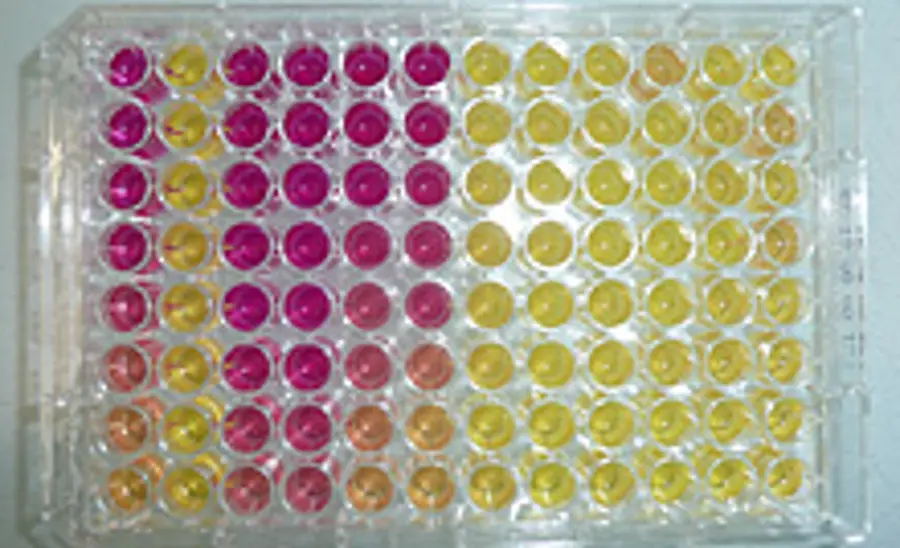Yeast Estrogen and Androgen Screens

Test organism
- Baker’s yeast (Saccharomyces cerevisiae)
Detectable effects (impact)
Activation or inhibition of the human estrogen receptor (YES, (anti-)estrogenic effect)
Activation or inhibition of the human androgen receptor (YAS, (anti-)androgenic effect)
Test principle, taking YES as an example
- In the Yeast Estrogen Screen, genetically modified yeast cells (Saccharomyces cerevisiae), which contain the gene for the human estrogen receptor coupled with a so-called reporter gene (LacZ), indicate estrogenic effects.
- If an estrogenically active substance binds to the estrogen receptor in the cell, the corresponding gene and then the reporter gene are read. The latter gene encodes for an enzyme (beta-galactosidase), which converts a dye (yellow to red) and thus induces a colour reaction, which is directly correlated to the existence of estrogenically active substances.
- After 18-hour exposure to chemicals or environmental samples, the estrogeneity of the analysed samples can be measured based on colour induction.
- By means of lyticase digestion of the yeast cells (L-YES) after exposure, the sensitivity can be increased by about one order of magnitude.
The same assay principle applies to the detection of anti-estrogenic substances in YES, as well as androgenic and anti-androgenic substances in YAS.
Flow Chart
Video tutorial
Test duration
- 3 days (exposure time: 18 hours)
Relevance
- Suitable for detecting numerous natural and synthetic hormonally active substances such as environmental toxins from everyday products, e.g. birth control pill ingredients (17α-ethinylestradiol), synthetic materials (bisphenol A, phthalates), pesticides (methoxychlorine) and non-ionic surfactants (alkylphenoles).
- Substances with an activating or inhibitory effect on the estrogen and/or androgen receptor of organisms may interfere with reproduction, affect the metabolism and immune system and induce the formation of tumours.
Guidelines and literature
- ISO 19040-1:2018 Water quality — Determination of the estrogenic potential of water and waste water — Part 1: Yeast estrogen screen (Saccharomyces cerevisiae)
- Routledge EJ and Sumpter JP (1996). Estrogenic activity of surfactants and some of their degradation products assessed using a recombinant yeast screen. Environ. Toxicol. Chem. 15(3): 241-248.